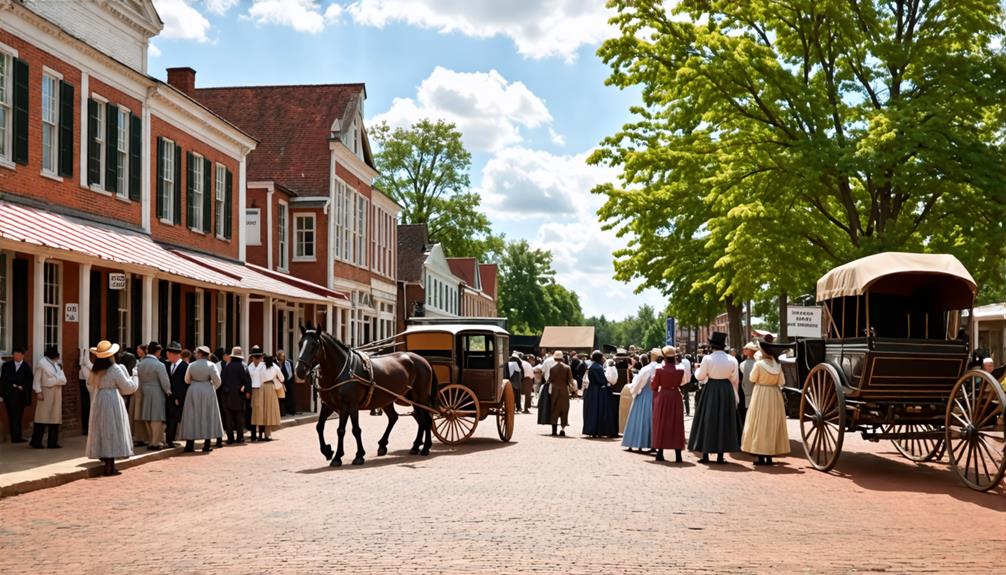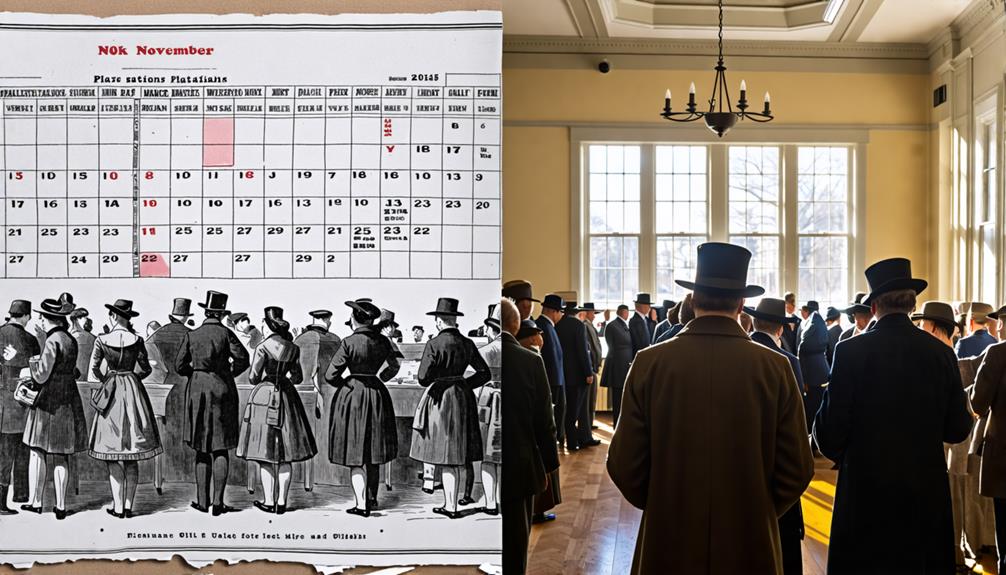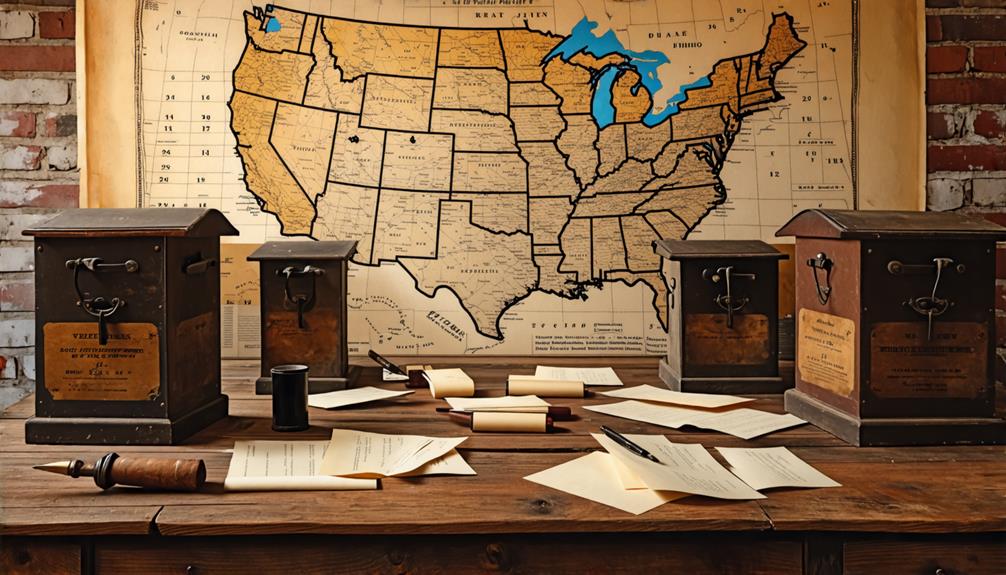You might be surprised to learn that U.S. elections weren't always the one-day events we're familiar with today. In fact, for much of the 19th century, Americans had a 34-day window to cast their votes. This extended period was essential in accommodating the realities of rural life and slow communication systems of the time. But why did this lengthy voting season come to an end? The answer lies in a complex interplay of social, technological, and political factors that reshaped the American electoral landscape. Understanding this shift can offer valuable insights into the evolution of democracy in the United States.
Key Takeaways
- U.S. elections historically spanned a 34-day period from early October to early December.
- Extended voting accommodated slow travel and communication in the 19th century.
- The long window allowed farmers to balance voting with church and market commitments.
- Varying regional schedules and higher voter turnout were facilitated by the extended period.
The 34-Day Election Window

Before 1845, American elections unfolded over a sprawling 34-day window, reflecting the realities of a young, agrarian nation. This extended period, typically spanning from early October to early December, allowed states considerable flexibility in conducting their elections. However, this system came with its own set of challenges.
The 34-day window accommodated the slow pace of travel and communication in 19th-century America. Yet, it also created inconsistencies in voter turnout and results across different states. Early voting in one state could influence public opinion and turnout in others, potentially skewing the overall outcome.
The lack of a uniform Election Day made it difficult to guarantee consistency in the electoral process. Recognizing these issues, federal law eventually standardized Election Day in 1845, streamlining the voting process and addressing the logistical hurdles posed by the agrarian society of the time.
Reasons for Extended Voting Period
The extended 34-day voting window in early American elections served several practical purposes in a young, primarily rural nation. This prolonged period accommodated the needs of an agrarian society, where farmers often had to travel long distances to reach polling locations. You'd find that this extended voting period provided flexibility for rural voters, allowing them to balance their civic duty with other responsibilities.
The reasons for this extended voting window included:
- Accommodating long travel times for farmers
- Balancing voting with church and market days
This flexibility was essential in ensuring higher voter turnout. As results from early voting could influence public opinion, candidates had to strategically consider their campaigning efforts throughout the entire period.
The extended voting window was a necessary adaptation to the realities of early American life, reflecting the nation's primarily rural character.
Transition to Uniform Election Day

In 1845, you'd witness a significant alteration in American electoral practices as Congress established a uniform Election Day, marking the end of the extended 34-day voting window. This federal law designated the first Tuesday after the first Monday in November as Election Day across the nation.
The change aimed to streamline the voting process and reduce confusion caused by varying election dates among states. You'd notice how this transformation addressed concerns about early voting results influencing subsequent voter turnout and opinions.
By implementing a single Election Day, the government created a more organized electoral system, allowing for better planning and participation. This alteration set a precedent for future electoral laws, promoting consistency in the democratic process nationwide.
You'd recognize this change as a vital step towards a more standardized and efficient voting system in the United States.
Conclusion
You've learned about a fascinating aspect of U.S. electoral history.
The 34-day voting window was a practical solution for its time, but it's no longer necessary in our modern era.
Today's standardized Election Day guarantees fairness and efficiency across the nation.
As you reflect on this evolution, consider how it's shaped our current voting practices and what future changes might improve our democratic process even further.

Leave a Reply